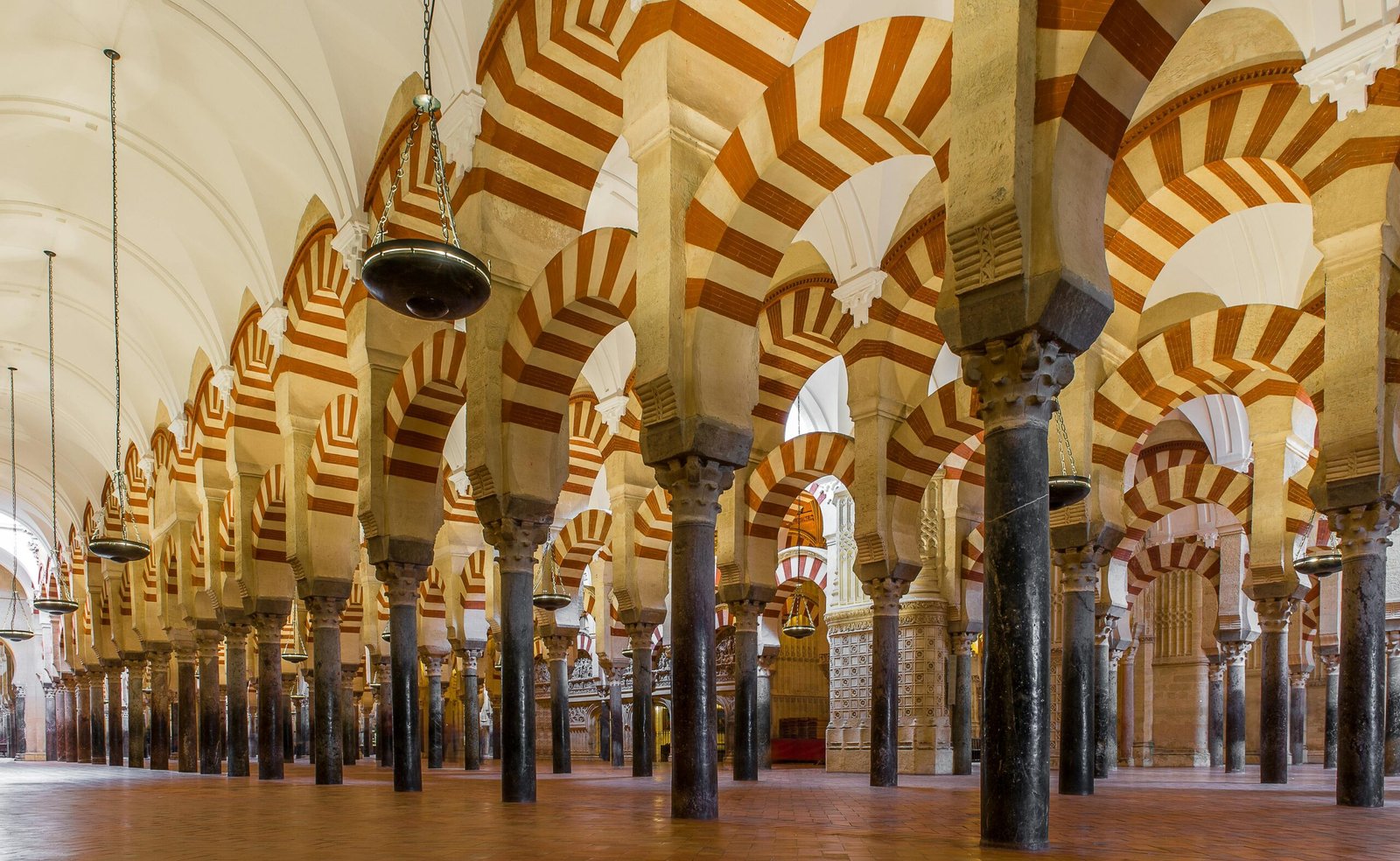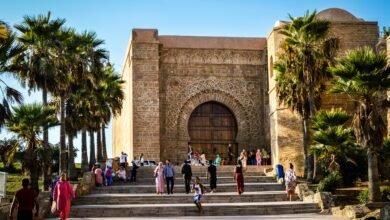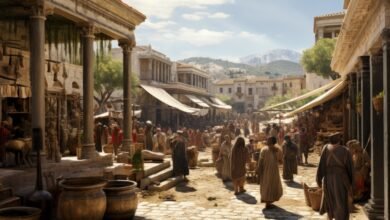الأندلس: إشعاع الحضارة الإسلامية وتأثيرها العميق على أوروبا
تُعد فترة الوجود الإسلامي في الأندلس من أروع الفترات في تاريخ البشرية، حيث شهدت شبه الجزيرة الإيبيرية تطورًا حضاريًا غير مسبوق بين عامي 711م و1492م. تركت الأندلس تأثيرًا عميقًا على أوروبا في العديد من المجالات، مثل العلم والفنون والعمارة والعلوم الطبيعية. في هذا المقال، سنكشف عن كيفية تأثير الحضارة الإسلامية في الأندلس على أوروبا، وكيف أن هذا التأثير لا يزال حاضرًا في العصر الحديث.
- إشعاع العلم والتعليم: أضواء من قرطبة إلى أوروبا
كان العلم والتعليم في الأندلس من أهم عناصر النهضة الحضارية في المنطقة. في القرن العاشر، أصبحت مدينة قرطبة مركزًا علميًا بارزًا، حيث كانت تضم واحدة من أكبر المكتبات في العالم الإسلامي، التي تحتوي على أكثر من 400,000 كتاب في مواضيع متنوعة مثل الفلك والطب والفلسفة. كان العلماء مثل الفارابي، وابن سينا، وابن رشد يدرسون في هذه المدينة، مما جعلها منارة للعلم والمعرفة (جمال الدين، “قرطبة: عاصمة الثقافة الإسلامية”، 2017).
لقد كانت حركة الترجمة في الأندلس، التي تضمنت ترجمة أعمال أرسطو، وأفلاطون، وابن سينا، إلى اللغة اللاتينية، عاملاً رئيسيًا في تحفيز النهضة الأوروبية. كما أسهمت في تطور الفلسفة والعلم في العصور الوسطى. على سبيل المثال، تُرجمت العديد من أعمال الفلسفة الإسلامية إلى اللاتينية في القرن الثاني عشر، مما ساعد في إعادة إحياء الفلسفة اليونانية القديمة في أوروبا (ديلوم، “الفلسفة الإسلامية وتأثيرها على أوروبا”، 2015).
- الفنون والعمارة: من الأندلس إلى أوروبا
لم يكن تأثير الأندلس مقتصرًا على العلوم فقط، بل امتد أيضًا إلى الفنون والعمارة. تمزج العمارة الأندلسية بين التأثيرات الإسلامية والعناصر المحلية، مثلما يتضح في قصر الحمراء في غرناطة، والجامع الكبير في قرطبة. هذه المعالم تمثل قمة الإنجاز المعماري في العصور الوسطى (فاهيم، “العمارة الأندلسية وتأثيراتها في أوروبا”، 2018).
كما انتقل هذا الأسلوب المعماري إلى أوروبا بعد سقوط الأندلس. بدأ العديد من المعماريين الأوروبيين في استلهام الأسلوب الأندلسي في بناء الكنائس والقلاع الأوروبية، مثل استخدام الأقواس المدببة والزخارف الهندسية التي كانت تزين المساجد في الأندلس. حتى مفهوم القباب الكبيرة والمدببة أصبح جزءًا من تصاميم الكنائس الأوروبية (التين، “أثر العمارة الإسلامية في أوروبا”، 2019).

« لقد كانت الأندلس أرضًا للعلم والمعرفة، وسقفًا للحرية الفكرية التي نادراً ما عرفتها أوروبا في عصورها المظلمة. إن نور الأندلس لا ينسى، فقد زرعنا فيه بذور الفكر الذي حصدته الأجيال القادمة، ومنه استنار العالم. »
— ابن رشد
- العلوم والتكنولوجيا: الثورات العلمية التي انطلقت من الأندلس
ساهم علماء الأندلس بشكل غير مسبوق في تقدم العلوم الطبيعية والتكنولوجيا. على سبيل المثال، ابتكروا أدوات فلكية متطورة مثل الأسطرلاب، الذي كان يُستخدم في قياس ارتفاع النجوم وحساب المسافات بين الأرض والكواكب (سامي، “العلوم الإسلامية في الأندلس”، 2016).
وفي مجال الرياضيات، أدخل الأندلسيون الأرقام العربية إلى أوروبا، وهو ما أحدث ثورة في النظام العددي وحلّ الأرقام العربية محل الأرقام الرومانية في أوروبا. كما قدم الأندلسيون إسهامات هائلة في الطب، حيث طوروا أدوية وتقنيات علاجية استُخدمت في أوروبا لعدة قرون (محمود، “الطب في الأندلس: إسهامات وتأثيرات”، 2017).
- التأثير الاجتماعي والثقافي: أطعمة وأزياء وموسيقى من الأندلس إلى العالم
أثر الأندلس في الحياة اليومية في أوروبا أيضًا من خلال العادات الاجتماعية والثقافية. على سبيل المثال، أدخل الأندلسيون العديد من المنتجات الزراعية إلى أوروبا مثل الحمضيات، والقطن، والموز. كما ساهموا في تطوير تقنيات الزراعة، مما أدى إلى زيادة الإنتاج الزراعي وتحسين حياة الفلاحين الأوروبيين (إبراهيم، “التأثير الزراعي للأندلس في أوروبا”، 2018).
في مجال الأزياء، تأثرت الموضة الأوروبية بالملابس الإسلامية التي كانت تتميز بالأقمشة الفاخرة والزخارف المعقدة. أما في الموسيقى، فقد كان للأندلس تأثير كبير، حيث مزجت الألحان الإسلامية مع الأنماط الموسيقية الأوروبية، مما أدى إلى تطور موسيقي امتد عبر القارة (حسن، “الموسيقى الأندلسية وتأثيراتها على أوروبا”، 2020).
- التعايش الديني والثقافي: نموذج من التسامح والتفاعل
تميزت الأندلس بتعايش الأديان السماوية الثلاثة: الإسلام والمسيحية واليهودية. في هذه البيئة، تفاعلت الأديان المختلفة بسلام وازدهرت الثقافات المتنوعة. وكان المسلمون والمسيحيون واليهود يتشاركون في الحياة اليومية، مما أدى إلى بيئة من التعاون الفكري والعلمي (عبد الله، “التعايش الديني في الأندلس: نموذج من التسامح والتفاعل”، 2019).
كان العلماء من مختلف الأديان يشاركون في المدارس والجامعات، حيث قاموا بترجمة الكتب العربية إلى اللاتينية. وبهذا التفاعل والتعايش، كانت الأندلس تمثل نموذجًا للتسامح الذي ساهم في نقل المعارف والمفاهيم التي أثرت في العالم بأسره.
خلاصة: الأندلس – إرث لا يمحى
على الرغم من سقوط الأندلس في عام 1492م، فإن تأثير هذه الحضارة الإسلامية على أوروبا لا يزال قائمًا إلى اليوم. تركت الأندلس إرثًا حضاريًا في مجالات العلم والفن والفلسفة، وقد ساهمت في تحفيز النهضة الأوروبية التي غيرت وجه العالم. لقد كانت الأندلس جسرًا بين الشرق والغرب، حيث تم نقل المعارف والابتكارات التي ساعدت على تشكيل العالم الحديث (رؤوف، “الأندلس: إرث الحضارة الإسلامية”، 2021).





